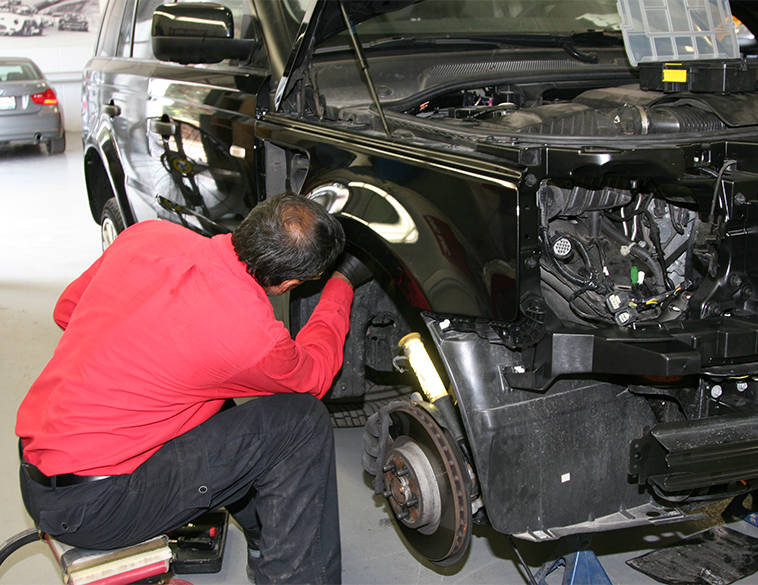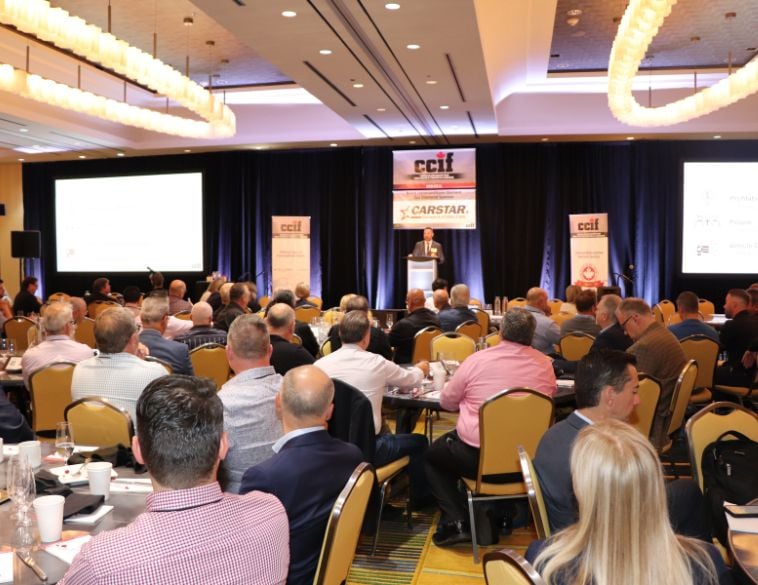The more focused the repair plan, the better the outcome.
Good repair plans are key to any successful collision repair operation.
Having an effective process in place will ensure the rest of the vehicle repair goes smoothly.
According to Stu Klein, Technical Trainer at Fix Network, a good practice for collision shops is to implement a fail-proof repair plan in your shop by setting guidelines before the planning process begins, as well as involving every team member from the start.
Category selection
At Simplicity Car Care, Vice President Domenic Prochilo notes that categorizing repair plans also goes a long way to developing an effective process.
“There are a sizable number of repairers across Canada that are looking to create new and sustained lines of revenue,” he says.
For these shops, Prochilo recommends selecting certain types of vehicles and repairs that “will create momentum and small consistent wins.”
For building an effective repair planning process, focusing on smaller, simpler repairs at the beginning allows the shop to build on a solid foundation.
It also, as Prochilo explains, allows staff to see the wins and losses for each repair and allow them to gain a thorough understanding of how the repair planning process is impacting shop operation and as well as enhancing communication among all team members involved.
At CARSTAR Torcam Group, owner Sebastian Torres, says that in the case of their business, a huge emphasis on training and promoting from within the organization has been hugely positive.
“All the people in our facilities have started as a receptionist or detailer and worked their way up in the shop,” notes Torres.
“Every employee needs to understand all facets of the job. Additionally, the front office needs to know what is happening in the production area, and vice versa. This helps ensure everyone understands all aspects of a repair plan.”
Teamwork counts
The essence of teamwork during repair planning can’t be stressed enough.
“Sometimes you’ll see that the appraiser relies on the technician to give them the list of repairs or the appraiser thinks they can do it on their own,” says Torres.
“It needs to be a cooperative plan, where the appraiser and technician ask thoughtful questions to one another and discuss the repair plan together. It doesn’t matter if you think something is damaged or not, you need to ask each other and talk through it—even if you think it’s far-fetched.”
An integral part of any successful repair plan is to thoroughly document each vehicle that comes in.
This means performing a pre-scan before actually beginning the repair plan, thoroughly documenting the damage and also following the OEM procedures and checking the availability of replacement parts.
In the current economic climate, where parts shortages are an ongoing issue for many shops, the importance of this aspect cannot be stressed enough, since it can help avoid unnecessary delays, a particular consideration where for many shops, repair volume is still significantly below pre-pandemic levels.
Highly organized
Once the dismantling process begins, it’s also imperative to be highly organized, ensuring that when parts come off the vehicle they are examined, categorized and placed into carts.
Stu Klein at Fix Network also recommends using parts carts and bins in the same manner for each vehicle being repaired, helping ensure consistency within the shop.
In today’s marketplace, where brand reputation is everything, it’s also important to effectively communicate with the customer, since ultimately it is their vehicle and their experience with the collision centre impacts not only the shop’s reputation but also that of every stakeholder involved in the process, including the OEM and insurer.
Domenic Prochilo suggests that an effective way to do this is by creating a sales pitch.
“At Simplicity Car Care, we like the approach to repairing a vehicle in a similar way that a patient would visit a doctor or a dentist,” he says.
By asking a series of qualifying questions once the First Notice of Loss (FNOL) has been initiated, it allows the shop to better communicate with the insurance adjuster, as well as the customer and the shop’s staff in how the claims process is going to be managed.
Additionally, creating a sales pitch/qualifying process, also allows shop staff to schedule the repair around the collision centre’s own availability, ensuring the vehicle is dropped off, repaired and delivered to the customer as efficiently as possible.
Leveraging Technology
Today collision centres have a wealth of tools at their disposal to help deliver a better and more efficient repair process.
When it comes to documentation, digital solutions such as mobile apps can offer very significant benefits.
According to Ted Wilson, Director of Business Solutions at Sherwin-Williams, the company’s Collision Core Quality app, allows shops and their staff to replace paper checklists and end-of-repair quality controls with an easy-to-use mobile application that’s able to deliver in-process, stamped and validation—improving efficiency and saving considerable time.
“The App also enables technicians to ensure proper repair procedures are followed,” says Williams, “and, with Collision Core Quality, the shop can provide the customer with a digital record of all of the vehicle’s repairs.”



